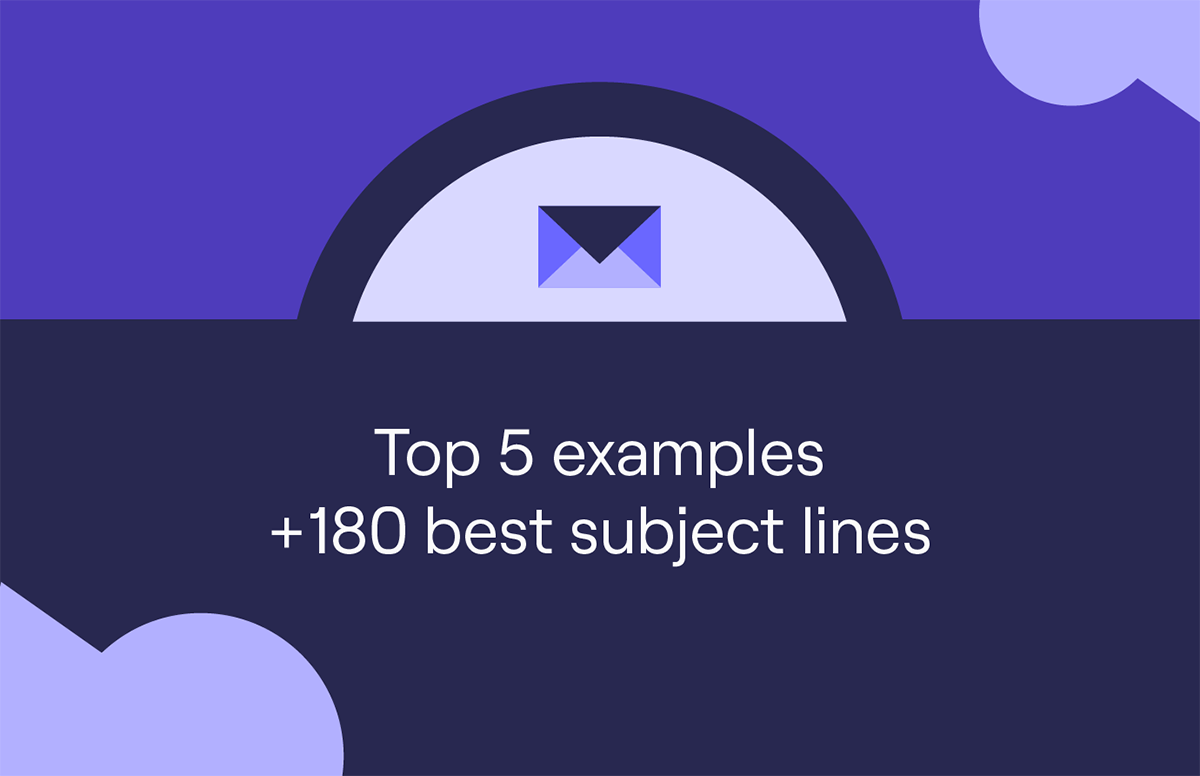Prospecting Automation: Cracking the Code for More Sales
SDRs aren’t hired to build lists. Automated prospecting makes sure they don’t have to.
Every day, you’re asked to deliver: hit outreach numbers, book meetings, feed the pipeline. All while spending hours list building, cold emailing, chasing silence, and updating CRMs.
It doesn’t have to be that way.
With the right tools, you can automate the busy work, stay consistent, and focus on conversations that drive revenue.
This guide explains how prospecting automation works, recommends tools, and outlines how to sell more without burning out.
What is prospecting automation?
Sales prospecting automation uses tools to handle the repetitive parts of lead generation, such as finding prospects, sending cold emails, following up, and booking meetings. It frees up a sales team’s time to focus on building connections and closing deals.
It doesn’t mean you hand everything off to a robot. You’re still in control of picking your audience, crafting sales emails, and adjusting your strategy. Automation just speeds up the parts that don’t need your full attention.
Quick example:
One SDR I know used to send 40 LinkedIn messages a day manually. It took half their morning, leaving little time for honest conversations. After LinkedIn prospecting automation, they scaled to 80–100 targeted messages daily.
More importantly, automation freed up their mornings for follow-ups, cold calls, and meetings.
Traditional vs automated prospecting
Traditional prospecting
Traditional prospecting means doing everything manually. Sales professionals research potential prospects individually, build lists from scratch, write their own cold email campaigns, and track follow-ups with spreadsheets or sticky notes.
It’s slow, repetitive, and drains time they could spend talking to potential customers.
It is no surprise that sales reps today spend 70% of their time on non-selling tasks, according to Salesforce’s State of Sales report. When you’re buried in admin work, keeping your outreach consistent is hard.
Miss a day, and your pipeline starts drying up fast.
The pressure is real:
According to the Salesforce research, 84% of sales reps missed quota last year, and 67% don’t expect to hit it this year. Traditional prospecting methods just can’t keep up with today’s demands.
Automated prospecting
Automated prospecting changes the game. With the right tools, a sales representative can pull prospect lists automatically, set up sales email sequences, schedule follow-ups, and track customer engagement. They can focus their energy where it matters: conversations, demos, deals.
Automation helps you stay consistent, scale your outreach, and keep your pipeline full without working 12-hour days.
And it works. Companies that empower their sales teams with automation report 10–15% higher productivity. Automating manual processes can free up about 20% of a sales team’s capacity for selling.
HubSpot research also shows that 73% of salespeople using AI tools have significantly boosted productivity by automating manual tasks and making faster decisions.
Benefits of automated sales prospecting
Automated prospecting removes those that you’re able to do in a day. It lets you reach more prospects, stay consistent, and focus your energy on moving leads through your sales funnel.
Here’s how automated sales prospecting benefits revenue teams:
Saves you time
Researching prospects, writing emails, and chasing follow-ups consume most of your selling hours.
Automation handles these repetitive tasks in the background so you can focus on conversations that move deals forward.
Reach more prospects without burning out
Manually reaching 50–100 prospects a day is exhausting and unsustainable in the long term.
Sales automation allows you to contact hundreds of targeted prospects consistently without sacrificing energy, quality, or your evenings. More outreach, less burnout.
Stay consistent (even on your busiest days)
Prospecting consistency is key to a healthy sales pipeline. Meetings and urgent tasks easily push outreach aside. Prospecting automation keeps your outbound running even when your calendar fills up.
Personalise at scale
Modern automation goes beyond dropping a first name into a template. The best prospecting tools pull dynamic fields like company size, industry, tech stack, or recent funding rounds so you can reference details that matter to each prospect.
For instance, instead of “Hi {FirstName},” you can open with:



Noticed {CompanyName} just expanded into {Region}. Curious how you’re scaling your {Department} team?”
Improve data accuracy and targeting
A high bounce rate, outdated data, and irrelevant contacts kill your outreach before it starts.
Good prospecting automation tools pull fresh data from verified sources and sync it with your CRM in real-time.
This means you target the right people at the right companies with far fewer bounces.
Cognism is a fantastic tool to help you achieve this. Take a look at what Tharsus said:
“Our open rates used to be between 2-6%. Now they range from 40% to 60%. Working with a database that has a pool of verified emails makes my job as a marketer easier.”
Reduce stress and prevent pipeline gaps
Inconsistent prospecting leads to empty calendars and missed targets. Without a steady flow of outreach, your pipeline thins out (and no amount of end-of-month hustle can fix it).
Sales automation keeps your outreach running even when your day gets packed with calls and demos.
It helps you maintain a healthy pipeline week after week, so you are not stuck chasing deals in a panic at the end of the quarter.
The role of AI in modern sales strategies
Progressive sales teams no longer experiment with AI; it is quickly becoming the new norm. In a market where speed, personalisation, and accuracy decide who wins deals, trying to sell without AI already feels outdated.
“If you aren’t actively integrating AI into every layer of your sales team today, you’re watching your competitors lap you. Not tomorrow. Now.”
- Aaron Agius, Co-Founder & M.D @ Louder.Online
AI removes guesswork and manual bottlenecks at every stage of the sales process.
Here’s how automated prospecting and outreach with AI fits into today’s best sales strategies:
- Prioritising the right leads. Instead of sales teams working through long lists manually, AI scores leads based on engagement, job titles, company fit, and buying intent.
- Personalising outreach at scale. AI tools pull real-time data like recent funding, company news, and tech stack updates. You can use this info to tailor relevant and timely messages without writing every email from scratch.
- Optimising follow-up timing. AI analyses open rates, reply times, and behaviour patterns to suggest the best times to reach out. So you send the right message at the right moment instead of guessing.
- Keeping your CRM clean and updated. AI enriches contact data and flags outdated or duplicate entries, so you spend less time chasing dead leads or fixing bad information.
- Forecasting pipeline health. AI spots early signs that deals are stalling. This helps managers and reps act sooner to keep the pipeline moving.
Integrating automated prospecting into your workflow
Automation is most powerful when it fits naturally into your daily workflow, not when it feels like a separate system you must manage.
Here is how to blend an automated prospecting system into the main channels you already use:
Email sequences
Email automation tools like Outreach let you build multi-step email sequences triggered by prospect actions.
For example, if a prospect opens your first email but does not reply, the system can automatically send a follow-up two days later with a new value point. It can trigger a personalised reminder if they click a link but still do not respond.
💡Pro tip:
Weak email prospecting automation often sends reminders like “just following up” without offering anything new. These do not move conversations forward. They only remind prospects you want a reply without giving them a reason to care.
You risk losing credibility fast if every follow-up feels like a nudge instead of offering fresh value.
Every follow-up should:
- Introduce a new benefit.
- Address a likely objection.
- Share a customer win.
- Or ask a specific, easy-to-answer question.
Social media outreach
LinkedIn Sales Navigator, combined with sales automation tools like Cognism, help automate parts of your social media outreach.
You can build filtered lists based on job title, industry, company size, location, and seniority level. For example, let’s take heads of marketing at SaaS companies with 51–200 employees in London. A workflow for this ICP may look like this:
The first step is sending a personalised connection request, something like:



Hi Joe, I saw Kaspr is growing fast — exciting times. Always happy to connect with marketing leaders building momentum. Let’s connect!
If the prospect accepts, an automated system can trigger a soft intro message 1–2 days later:



Thanks for connecting, Joe! I’ve recently seen a few SaaS teams like Kaspr crack outbound scaling. Would it help if I shared a few fast wins that worked for them?
If they engage, switch to manual, personalised messaging. If not, schedule a low-pressure follow-up sharing a resource, article, or customer story.
Done right, your automated LinkedIn prospecting feels personal and relevant, never spammy.
Use automated prospecting tools to open the door so you can step in personally when genuine interest appears.
Cold calling
While you cannot automate the call itself, you can automate the prep.
Tools like VanillaSoft and PhoneBurner build your daily call lists based on lead-scoring auto-dial numbers and log call results into your CRM with one click.
For example, if a lead opens your last two emails but does not reply, they automatically move to the top of your call list.
You can then enrich your lists directly to your CRM with a tool like Cognism.
💡Pro tip:
Let automation schedule call times based on the prospect’s time zone and past engagement patterns.
For example, if a prospect usually opens emails around 10 am local time, your system can prioritise calling them in that window instead of guessing.
Balancing automation with human touch
Too many reps treat automated prospecting as the entire strategy instead of the foundation. That is where deals go to die.
Automation can help you reach more people, but it does not make you more persuasive. It will not help you navigate objections, sense hesitation in an awkward silence, or build trust. That’s your job.
Let’s say you’re running a perfectly crafted sequence. Open rates look good. The message is clean. But if it sounds like it could have gone to ten thousand others, it won’t convert. You won’t know why unless you inject real human intuition into the process.
That’s what prospecting automation tools can’t give you: The ability to respond in real-time, to read the emotional cues, and to make the person on the other end feel like they’re more than a data point in your CRM.
The optimal workflow is hybrid:
- Automate repetitive outreach (first touch, follow-ups, calendar links).
- Manually personalise key touchpoints (video, voice notes, call scripts).
- Use engagement signals to decide when and how to jump in.
Let automation handle the repetitive tasks and show up when it matters.
Say their name. Reference their world. Listen more than you talk.
Let your personality and judgement do what a machine never could: Turn interest into intent.
Sales Companion: Your personal sales assistant
Automation, as powerful as it is, still needs a driver. You.
Imagine having a co-pilot who shows you which accounts matter, which are ready to buy, and the perfect moment to reach out. That is what Cognism Sales Companion is built for.
If you’re looking for the best automated prospecting software, you’ll quickly see why over 4,000 revenue teams trust Cognism. It provides phone-verified mobile numbers that connect up to x3 times more often than the industry average.
You also get real-time insights and signals, such as company funding events and leadership changes, so you always know who to contact and when.
Sales Companion adapts to your workflow, recommends who to contact next, and easily helps you multi-thread. Whether you’re working from your CRM, LinkedIn, or a sales engagement tool, the accurate data flows compliantly across every platform.
Ready to work smarter? Sign up for a demo 👇


-1.png)
